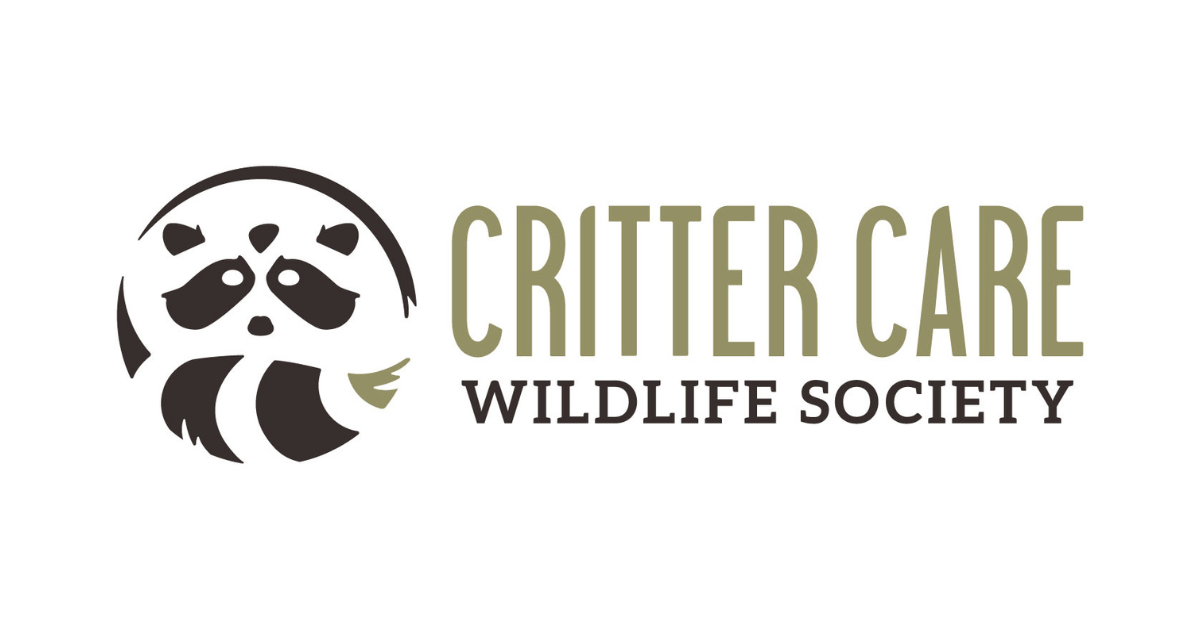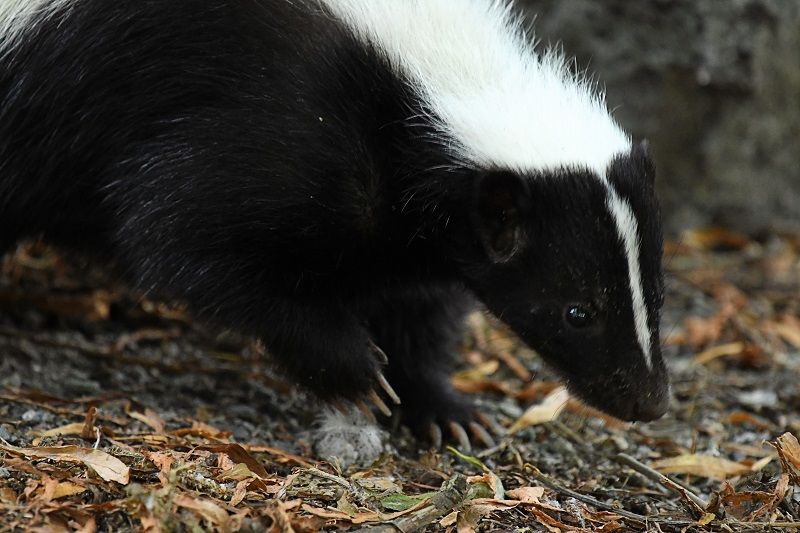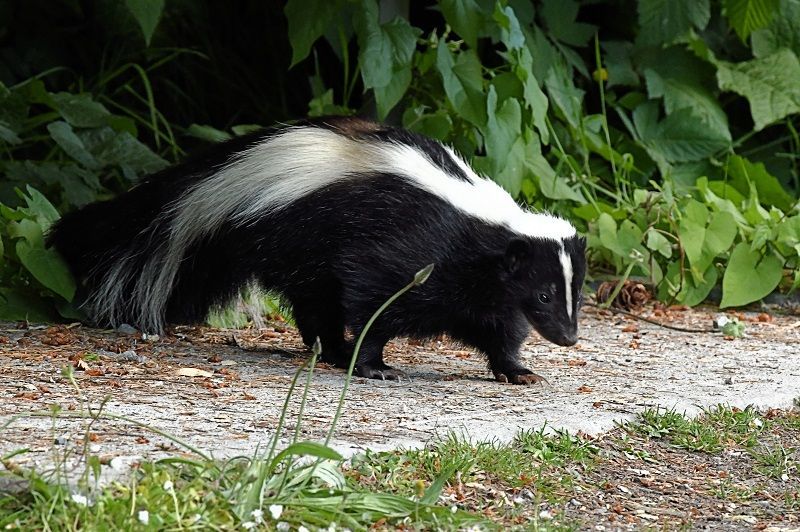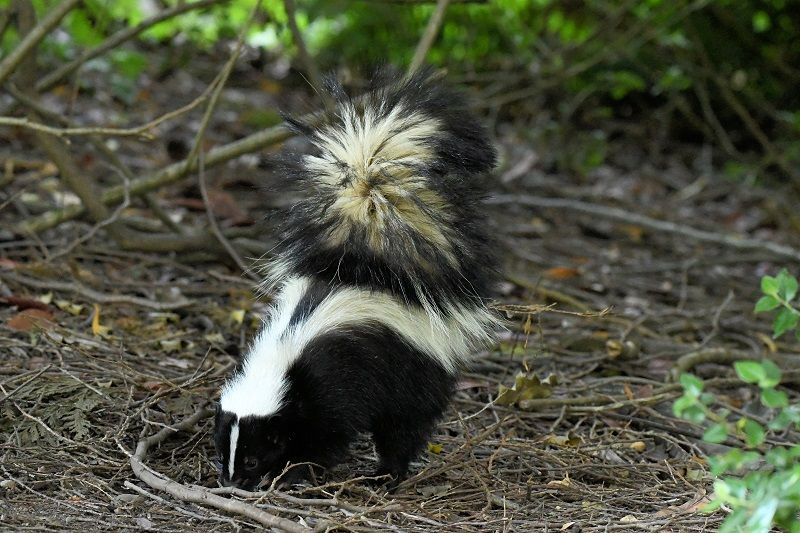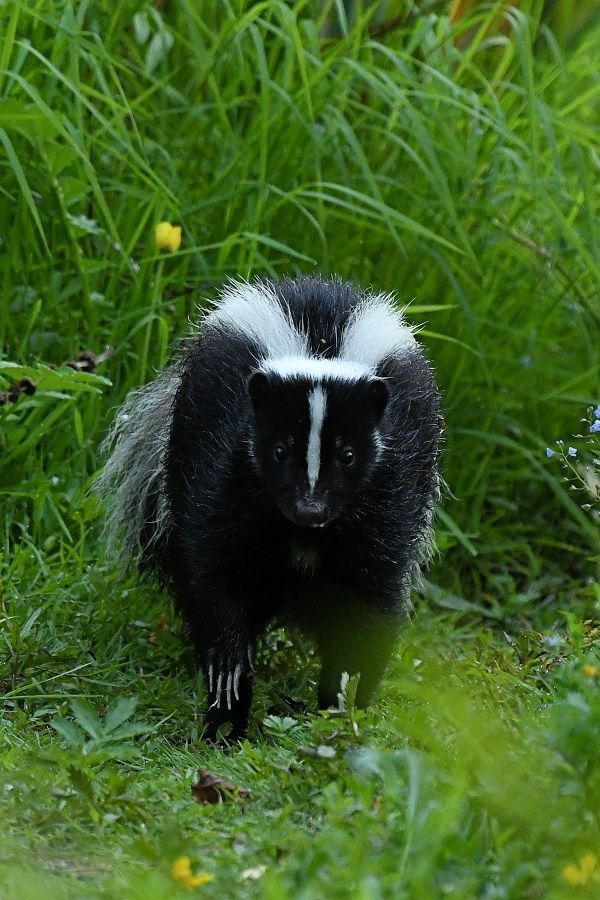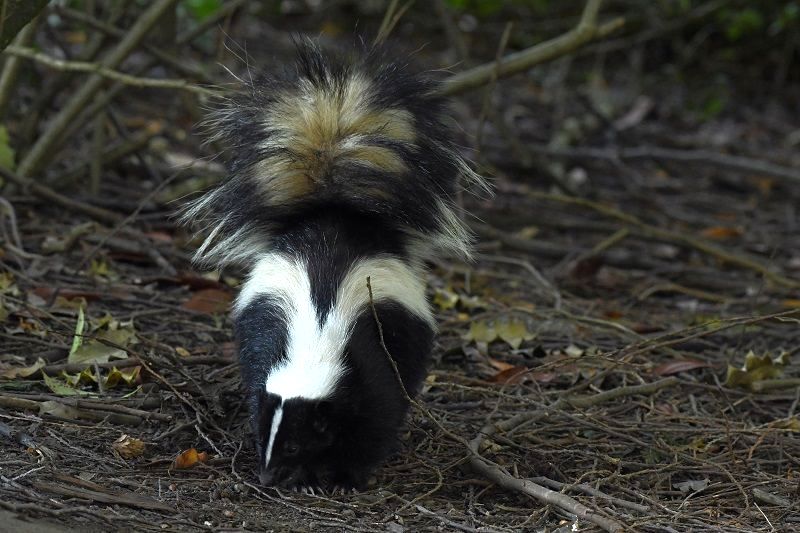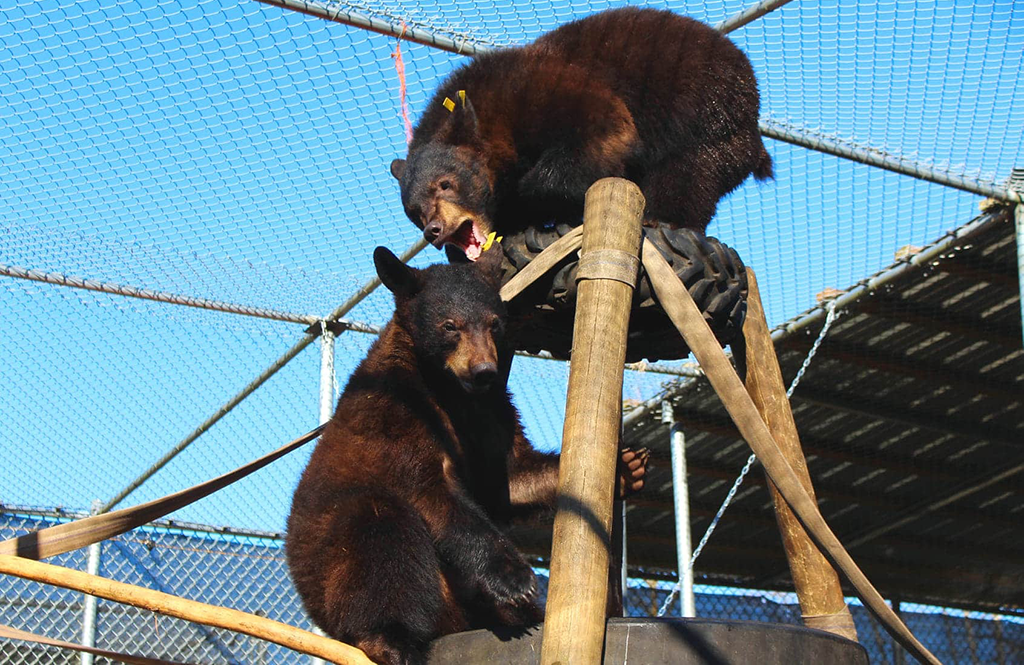Skunks in British Columbia
Did you know that there are two types of skunks in British Columbia?
One is the Striped Skunk (Mephitis mephitis,) and the other is the Western Spotted Skunk (Spilogale gracilis.)
The striped skunk is our most common skunk, found through out most of the province.
The Western Spotted Skunk, is not as common, and is mostly found in the lower mainland.
These small mammals are omnivores, and have adapted very well to suburban and urban environments. They are known for their foul-smelling spray, which they use to defend themselves when feeling threatened. Skunks are shy and timid, preferring to avoid humans and pets, however, human-skunk conflicts can occur if they seek shelter under buildings,
or are approached by pets and people.
Both species of skunk are native to British Columbia and are protected by the BC Wildlife Act.
Appearance
Striped skunks weigh about 2 to 3.5kg, are about 50 to 80cm in length, with females being slightly smaller. They carry distinctive white strips on their backs.
The much rarer, Spotted skunk has a distinctive pattern of spots and vertical lines on their backs, with a fluffy white tipped tail. They are not as large as stripped skunks, being about half the size of a house cat.
Skunks breed in the late winter, or early spring, giving birth in the late spring or early summer, to a litter of 2 to 12 kits. Skunks tend to be solitary, after mating female skunks will chase off the males, to raise the offspring on her own, though in colder climates, females can be found denning together.
Skunks are omnivores, with a diet that ranges from; insects and their larva, small mammals, carrion even eggs. They will also eat berries and a variety of plants.
Skunks use the the long claws found on their front paws to dig for small prey like grubs and mice.
Not many animals will prey upon the skunk, with owls and hawks being an exception. On occasion, wolves, foxes, coyotes, bobcats and cougars will hunt skunks as well.
During daylight hours, the skunks prefer the safety of the dens, they are most active at dusk and dawn. Skunks tend not to dig their own dens and tunnels, using the abandoned homes of other animals. They will also den under porches, crawl spaces, or debris piles.
Before a skunk sprays, they will usually give warning by facing the threat, stamping their front paws, sometimes charging forward a few paces. They may also drag their claws on the ground while backing away. Spotted skunks will stand up on their front paws and walk towards the threat.
Skunks spray only, as a last resort because it can take up to a week and a half to recharge.
If they can’t see what is behind them, they will spray their noxious musk in a cloud, or aim a stream at their target's eyes. Skunks can spray their powerful smelling musk up to 6m.
If you find yourself sprayed, or perhaps more likely, your curious canine companion, a solution
of 1L of hydrogen peroxide, ¼ cup of baking soda and 2 teaspoons of dish soap, will usually
do the trick.
A bath in tomato soap is only, an urban legend and is, not, an effective means to get rid of the odor.
Skunks can become comfortable around humans, but are generally shy, preferring to avoid interaction and conflict. To further reduce the chances of conflict with humans and pets, there are a number of things that you can do.
- Secure attractants, if you can, keep garbage indoors until collection day, or if not possible, make sure the garbage bins are tightly sealed.
- Wash tins and cans before putting them out in the recycling bin, washing the bin often, will reduce odors.
- Freeze strong smelling items, and put them out only on the day scheduled.
- Pick fruit as it ripens, pick up any fallen fruit. Also avoid letting bird seed collect
underneath bird feeders.
- Do not intentionally feed skunks, and keep pet food inside.
- To keep them from denning in your yard, block off any access points under decks or crawl-spaces with wire mess. You may also try using, motion activated sprinklers to deter them from foraging in your yard.
- A bright light or a radio can also work to encourage them to leave their den. However, between May and August it is best to let them be, to avoid separating a mother from her litter.
By giving them some space and respect, we can live with these beautiful animals without conflict.
